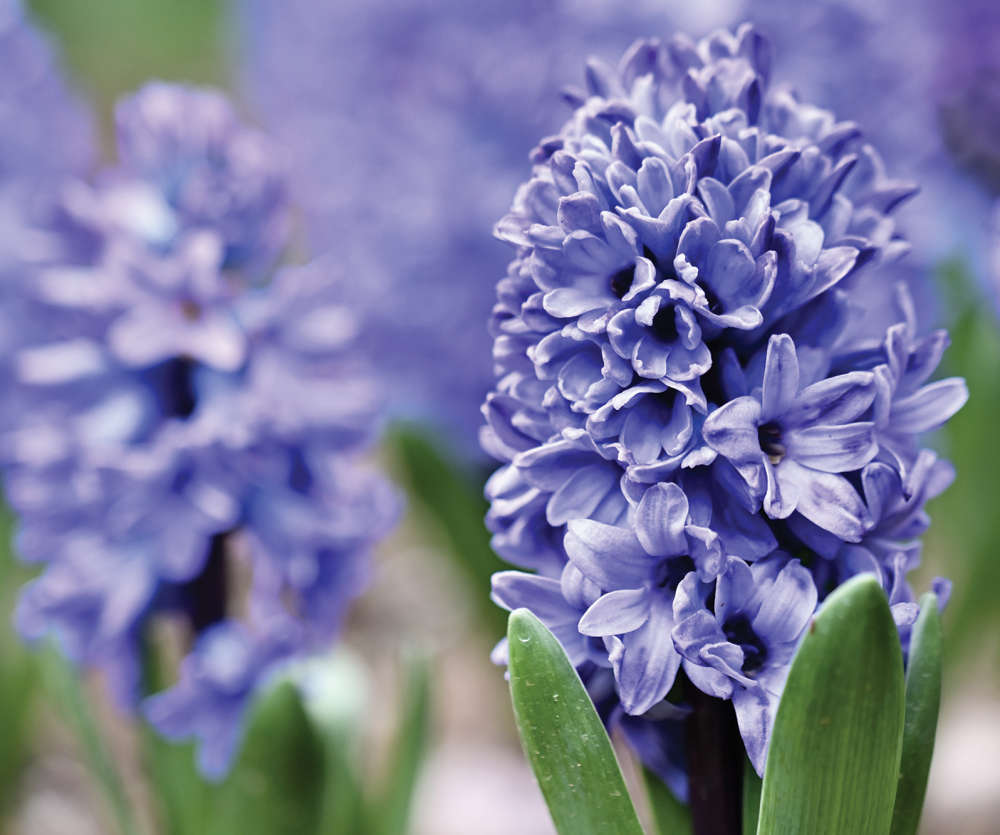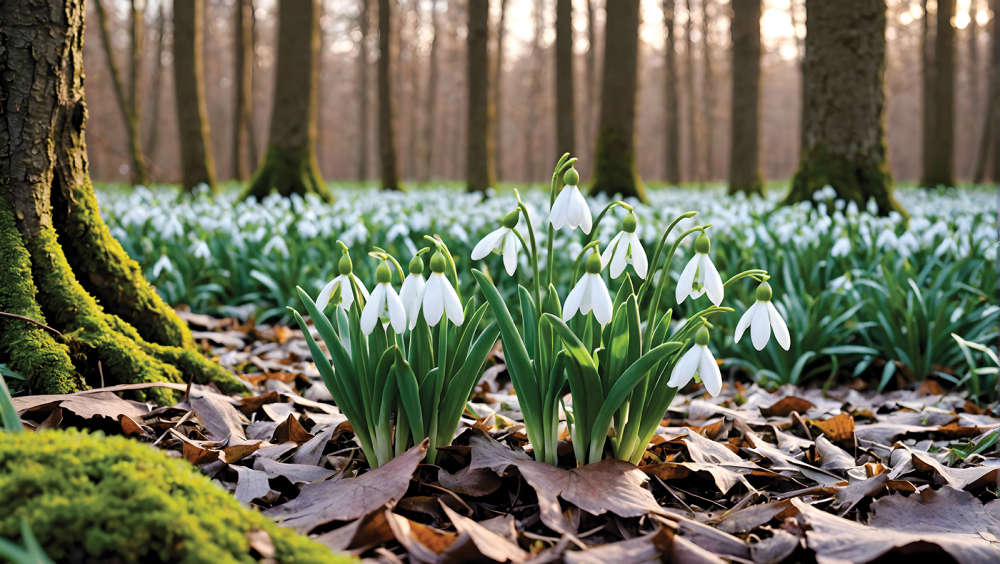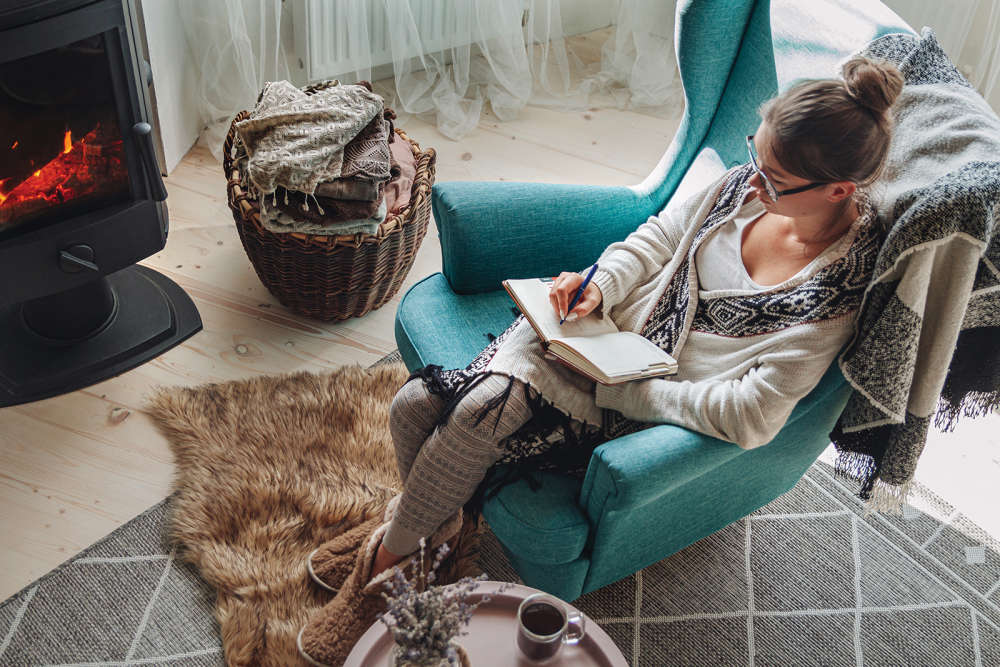
Versatile, easy-going hyacinths bring colour and scent indoors and out, writes Flo Whitaker
History is a fickle thing – our memories are selective. What we choose to remember or forget becomes historical ‘fact’. Every gardening history book includes a chapter on ‘Tulip Mania’; a period during the early 17th century when an insane obsession with tulips directly affected international currencies, but that was not the only time horticultural mayhem caused financial chaos. In the mid-1500s, hyacinths from the Ottoman empire first reached the botanical gardens of Europe – and the horticultural world was smitten.
By the 1680s, hyacinth bulbs had become trading commodities in their own right, selling for stratospheric sums. Particularly desirable forms fetched £100 per bulb – approximately £27,000 in modern-day calculations.

Spring-flowering bulbs are appearing in the garden centres now. Hyacinths are never the cheapest bulbs, but, as you shell out ten quid for a dozen, you can at least comfort yourself that you’re not having to re-mortgage your home. Hyacinth bulbs are sold in two ways. ‘Prepared’ types, also labelled ‘forced’ or ‘indoor’ have been pre-chilled to artificially create winter. Potted up now, they’ll think it’s spring and will burst into life, giving blooms to enjoy indoors at Christmas. Keep them outside in a well-lit, frost-free place, bringing them into a cool-ish room as the flower buds appear. Remember, they are really outdoor dwellers – avoid placing them by radiators or on sunny windowsills. When flowering has finished, they can be planted into a border.
‘Non-forced’ or ‘border’ hyacinths should be treated like other spring-flowering bulbs and planted outside in the usual way.
Wild hyacinths are pale blue. Cultivated forms come in many shades, including white, yellow, peach and pink. You’ll sometimes find bags of mixed ‘lucky dip’ varieties for sale. These are often well-priced, but be warned; different types won’t all bloom at the same time and their heights may vary. This seldom matters in an informal border setting, but may be annoying if you’re looking to create a more uniform display.

Given good, well-drained soil and a sunny spot, hyacinths flower satisfactorily for several years before requiring replacement. They make excellent additions to patio pots. ‘Woodstock’ bears headily-scented purplish blooms with lilac highlights. ‘Kronos’ carries almost impenetrable inky blue/black flowers – fabulously gothic when teamed with deep red velvety pansies.
On a brighter note, ‘Delft Blue’ produces highly fragrant china-blue flowers, tolerates slight shade and has a more vigorous quality – often persisting when others run out of steam. Best of all, perhaps, is sparkling white ‘L’innocence’. This old variety bears smaller, loosely arranged florets, giving a daintier appearance than many contemporary forms. Bred in the 1860s, ‘L’innocence’ has won numerous prizes, including the modern-day Award of Garden Merit, (AGM) from the Royal Horticultural Society. She captivated Victorian gardeners – and she’ll captivate you.

 Blooming Times: Harbingers of Spring
Blooming Times: Harbingers of Spring
 Homes Extra: Home Sanctuary
Homes Extra: Home Sanctuary
 Home Style: Ancient & Modern
Home Style: Ancient & Modern
 Blooming Times: Happy Faces
Blooming Times: Happy Faces
 Blooming Times: Winter Sparklers
Blooming Times: Winter Sparklers
 Homes Extra: Restore, Repair, Recycle
Homes Extra: Restore, Repair, Recycle
 Home Style: A Scandi Winter's Tale
Home Style: A Scandi Winter's Tale
 Blooming Times: Winter Wonders
Blooming Times: Winter Wonders
 Home Style: Bold, Brave & Beautiful
Home Style: Bold, Brave & Beautiful
 Blooming Times: The Answer Lies in the Soil
Blooming Times: The Answer Lies in the Soil
 Legendary Builds with Phoenix Construction Services
Legendary Builds with Phoenix Construction Services
 Blooming Times: Know Your Enemy
Blooming Times: Know Your Enemy
 Bespoke Dreams from Eridge Green Kitchens
Bespoke Dreams from Eridge Green Kitchens
 10 Hot Years: iFit Fires & Flues
10 Hot Years: iFit Fires & Flues
 Home Style: Bold Type
Home Style: Bold Type
 Blooming Times: The Sky's the Limit
Blooming Times: The Sky's the Limit
 Home Style: A Better Way of Life
Home Style: A Better Way of Life
 Homes Extra: Shed Space
Homes Extra: Shed Space
 Blooming Times: Top of the Pots
Blooming Times: Top of the Pots
 Kids Zone: Get the Kids Growing
Kids Zone: Get the Kids Growing